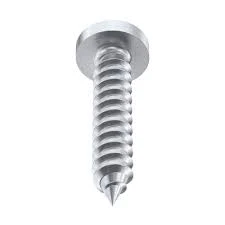black bolt in steel structure
The Role of Black Bolts in Steel Structures
In modern construction, steel structures have become a staple due to their strength, versatility, and durability. Central to the assembly and integrity of these structures are various fasteners, one of the most significant being bolts. Among them, black bolts play a crucial role in ensuring the stability and strength of steel structures. This article will explore the characteristics, applications, and importance of black bolts in the context of steel structures.
Black bolts, often referred to as black carbon steel bolts, are fasteners made from low-carbon steel without any protective coating. This lack of coating gives them their characteristic black appearance, stemming from the natural oxidation that occurs on the surface of the steel. While this may raise concerns about corrosion resistance, black bolts are typically treated during manufacturing to enhance their mechanical properties and may be used in environments where corrosion is minimal or managed through maintenance.
The Role of Black Bolts in Steel Structures
The applications of black bolts in steel structures are diverse. In the construction of buildings, they are commonly employed in girder connections, allowing for the reliable assembly of beams and columns. In infrastructure projects, such as bridges, black bolts are utilized to secure decking and railings. The ability to resist shear and tensile forces makes them a preferred choice for load-bearing connections and joints in various structural configurations.
black bolt in steel structure

Moreover, black bolts are often favored for their cost-effectiveness. Due to the absence of protective coatings, they can be less expensive than galvanized or stainless-steel fasteners. This economical advantage does not translate to a decrease in performance, given proper usage and maintenance specified in construction codes and engineering practices.
Additionally, black bolts are generally easy to install. They can be readily tightened using standard tools, which helps reduce labor costs and construction time. Their availability in various sizes, lengths, and grades allows engineers and contractors to choose the right bolt for specific applications, ensuring that the structural demands are met without overspending.
However, while black bolts are advantageous in many scenarios, it is essential to recognize their limitations, especially concerning corrosion resistance. In environments prone to moisture, chemicals, or other corrosive elements, black bolts may require additional protective measures, such as regular inspections and maintenance, or the implementation of sacrificial coatings. In some cases, specialized coatings may be applied to provide additional protection without compromising the bolt’s mechanical properties.
The importance of using black bolts in the design and assembly of steel structures cannot be overstated. They play a fundamental role in ensuring safety and reliability. Structural failures, often resulting from inadequate connections, can have catastrophic consequences. Therefore, engineers must adhere to established standards and guidelines when specifying fasteners, ensuring that black bolts are appropriately integrated into the design.
In conclusion, black bolts are an integral component of steel structures, offering high tensile strength, cost-effectiveness, and ease of installation. Their application spans various construction projects, reinforcing the importance of robust fastening systems. As the construction industry continues to evolve, understanding the role and proper utilization of black bolts will be critical in achieving safe, efficient, and long-lasting structures. Balancing performance and cost, while considering environmental factors, will ensure that black bolts remain a preferred choice in steel construction for many years to come.
-
Weatherproof Plastic Expansion Anchors for OutdoorNewsJun.06,2025
-
Sustainability in the Supply Chain: Eco-Friendly TEK Screws ProductionNewsJun.06,2025
-
Load-Bearing Capacity of External Insulation FixingsNewsJun.06,2025
-
Double Head Bolts: Enhancing Efficiency in Industrial MachineryNewsJun.06,2025
-
Corrosion Resistance in Chipboard Screws: Coatings for Wholesale DurabilityNewsJun.06,2025
-
Butterfly Toggle Bolts : Enhancing Structural ResilienceNewsJun.06,2025
